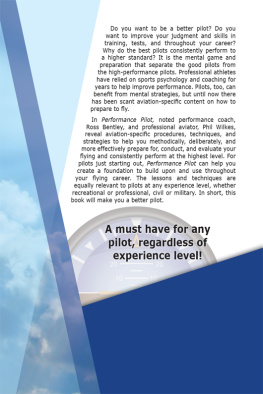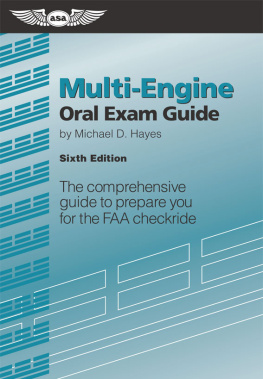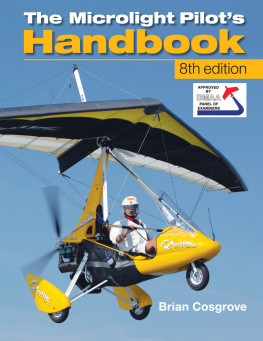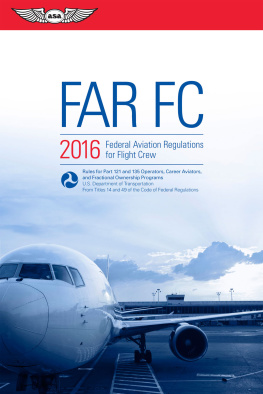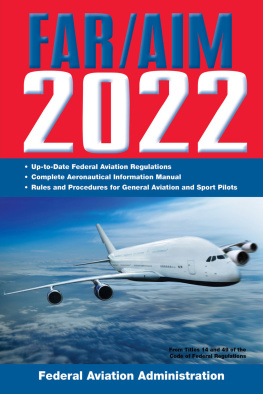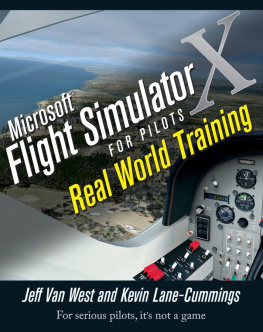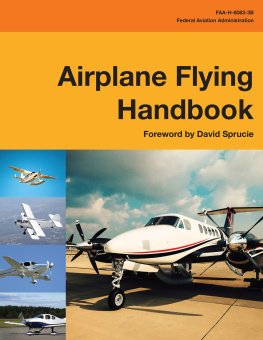Your Pilots License
From the McGraw-Hill PRACTICAL FLYING SERIES
Cross-Country Flying
Jerry A. Eichenberger
Handling In-Flight Emergencies
Jerry A. Eichenberger
The ABCs of Safe FlyingFourth Edition
David A. Frazier
The Pilots Air Traffic Control HandbookThird Edition
Paul E. Illman
The Pilots Radio Communications HandbookFifth Edition
Paul E. Illman
Weather Reports, Forecasts, and Flight PlanningThird Edition
Terry Lankford
Understanding Aeronautical ChartsSecond Edition
Terry Lankford
Better Takeoffs and Landings
Michael C. Love
Your Pilots License
Seventh Edition
Jerry A. Eichenberger


Copyright 2003 by The McGraw-Hill Companies, Inc. All rights reserved. Except as permitted under the United States Copyright Act of 1976, no part of this publication may be reproduced or distributed in any form or by any means, or stored in a database or retrieval system, without the prior written permission of the publisher.
ISBN: 978-0-07-143392-1
MHID: 0-07-143392-9
The material in this eBook also appears in the print version of this title: ISBN: 978-0-07-140285-9, MHID: 0-07-140285-3.
All trademarks are trademarks of their respective owners. Rather than put a trademark symbol after every occurrence of a trademarked name, we use names in an editorial fashion only, and to the benefit of the trademark owner, with no intention of infringement of the trademark. Where such designations appear in this book, they have been printed with initial caps.
McGraw-Hill eBooks are available at special quantity discounts to use as premiums and sales promotions, or for use in corporate training programs. To contact a representative please e-mail us at bulksales@mcgraw-hill.com.
Information contained in this work has been obtained by The McGraw-Hill Companies, Inc. (McGraw-Hill) from sources believed to be reliable. However, neither McGraw-Hill nor its authors guarantee the accuracy or completeness of any information published herein and neither McGraw-Hill nor its authors shall be responsible for any errors, omissions, or damages arising out of use of this information. This work is published with the understanding that McGraw-Hill and its authors are supplying information but are not attempting to render engineering or other professional services. If such services are required, the assistance of an appropriate professional should be sought.
TERMS OF USE
This is a copyrighted work and The McGraw-Hill Companies, Inc. (McGraw-Hill) and its licensors reserve all rights in and to the work. Use of this work is subject to these terms. Except as permitted under the Copyright Act of 1976 and the right to store and retrieve one copy of the work, you may not decompile, disassemble, reverse engineer, reproduce, modify, create derivative works based upon, transmit, distribute, disseminate, sell, publish or sublicense the work or any part of it without McGraw-Hills prior consent. You may use the work for your own noncommercial and personal use; any other use of the work is strictly prohibited. Your right to use the work may be terminated if you fail to comply with these terms.
THE WORK IS PROVIDED AS IS. McGRAW-HILL AND ITS LICENSORS MAKE NO GUARANTEES OR WARRANTIES AS TO THE ACCURACY, ADEQUACY OR COMPLETENESS OF OR RESULTS TO BE OBTAINED FROM USING THE WORK, INCLUDING ANY INFORMATION THAT CAN BE ACCESSED THROUGH THE WORK VIA HYPERLINK OR OTHERWISE, AND EXPRESSLY DISCLAIM ANY WARRANTY, EXPRESS OR IMPLIED, INCLUDING BUT NOT LIMITED TO IMPLIED WARRANTIES OF MERCHANTABILITY OR FITNESS FOR A PARTICULAR PURPOSE. McGraw-Hill and its licensors do not warrant or guarantee that the functions contained in the work will meet your requirements or that its operation will be uninterrupted or error free. Neither McGraw-Hill nor its licensors shall be liable to you or anyone else for any inaccuracy, error or omission, regardless of cause, in the work or for any damages resulting therefrom. McGraw-Hill has no responsibility for the content of any information accessed through the work. Under no circumstances shall McGraw-Hill and/or its licensors be liable for any indirect, incidental, special, punitive, consequential or similar damages that result from the use of or inability to use the work, even if any of them has been advised of the possibility of such damages. This limitation of liability shall apply to any claim or cause whatsoever whether such claim or cause arises in contract, tort or otherwise.
Contents
Introduction
Your Pilots License is now ending its fourth decade of publication. I remember reading the First Edition of this book, written by the late Joe Christy, when I was a student pilot. Ive had the honor of carrying on the two most recent revisions of Joes excellent work. The Sixth Edition was written in 1999, and a lot has changed since then that affects every fledgling pilot. These changes merit another revision to bring this book up to date.
This book is for both prospective and beginning pilots. It is not intended to be a formal text for, or to replace, ground school training. What this book will do is explain what a newcomer to the aviation world can expect to encounter, explore some licensing options, and cover some of the basics of aeronautical knowledge that will get far more complete treatment once you begin ground school. This book now covers not only the training steps to achieve a private pilots license, but also discusses other options, such as the sport pilot and recreational pilot certificates and flying sailplanes, and the changes in the flight training industry that have occurred since 1999. The simple and straightforward approach of previous editions is retained, so that you are not confronted with overly complicated terms and subject areas. The theory of flight, navigation, control techniques, weather basics, air traffic rules, and aircraft instrumentation are all covered in easy-to-understand language that will not intimidate even the reader with no prior exposure to flying.
Virtually anyone can learn to fly and become a safe and competent aviator. With the coming of the newly created sport pilot license, this statement is truer than ever before. Yet all pilots need a good foundation in the basics and must have a willingness to expend the needed effort in order to enjoy this exciting new venture.
The world of the pilot and of personal aviation is boundless. Through these pages you can begin to understand why most pilots say, The worst day flying is better than the best day doing anything else. Happy flying!
Jerry A. Eichenberger
1
The Most Frequently Asked Questions about Learning to Fly
Why Should I Learn to Fly?
Every pilot will probably have a different answer to this question. The important and correct answer depends upon you and your interests in life. Do you enjoy an exciting, yet safe challenge? If so, that can be reason enough to learn to fly without going any further. Some pilots, including me, like the idea of being able to do something that not everyone can do. Some people like watching other people do something, while others prefer to be doing it themselves. Most pilots value highly the fellowship that exists among pilots that transcends the barriers of income, job status, gender, and age that accompany so many other endeavors.
Next page

